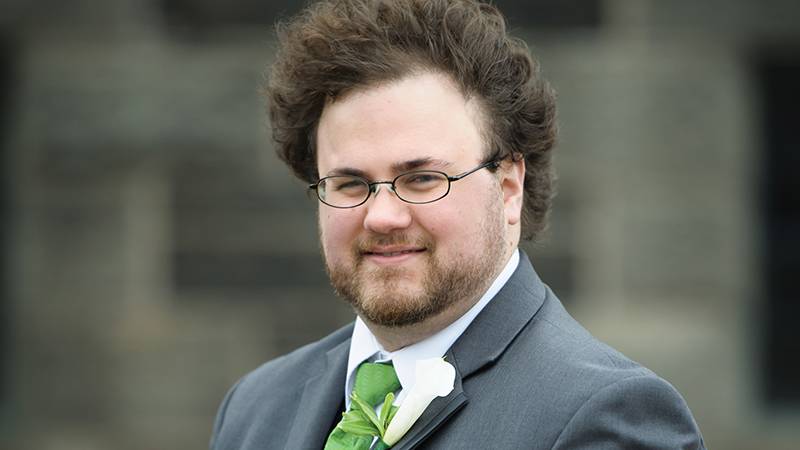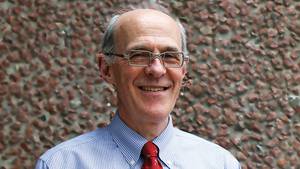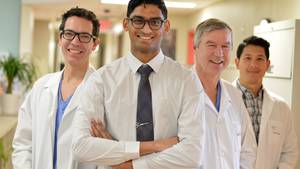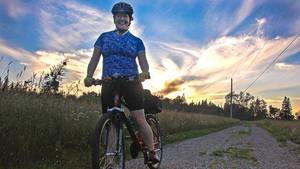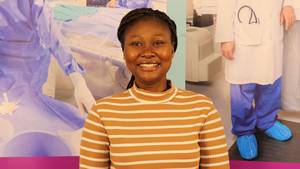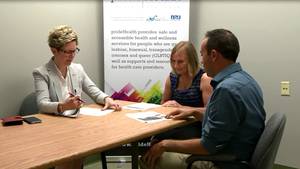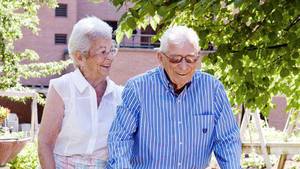When the third wave of COVID-19 hit Nova Scotia in spring 2021, Laird Smith continued to be diligent about following public health protocols like wearing a mask, social distancing and handwashing.
In late May, Laird tested positive for COVID-19 and he’s still unsure of how he contracted the virus.
“I had very limited potential exposure, so I assume it was through community spread,” he says.
With a pre-existing dry cough unrelated to COVID-19, it wasn’t until Laird began experiencing shortness of breath with his coughing that he became concerned. And then the fever set in.
“I haven’t had a fever in years,” recalls Laird. “As soon as that happened, I scheduled a COVID test.”
When the test came back positive — the same day the province opened vaccine appointments to his age group — Laird thought he could handle it at home.
Within a couple hours of receiving his results, Laird received a package that included contact information for a physician and a pulse oximeter. A pulse oximeter clips on a patient’s finger and monitors the percentage of oxygen in the blood. These pieces of technology are vital for patients to be safely monitored at home, as respiratory failure can be among the more severe symptoms of COVID-19.
Laird was using the pulse oximeter and it showed his oxygen was dangerously low. He contacted the physician for an assessment by phone, who recommended Laird call 911.
“When I contacted 911, they very kindly walked me through everything and told me the paramedics would come do an assessment,” says Laird.
The paramedics determined it was necessary to transport Laird to the QEII Health Sciences Centre. At the QEII’s Charles V. Keating Emergency and Trauma Centre, Laird received care in an isolation room — a negative pressure room that prevents air potentially contaminated with the virus from flowing out of the room.
While at the emergency department, Laird received an IV for nutrition — he’d been struggling to eat for several days — along with oxygen, bloodwork and other tests.
“The healthcare team was amazing; they kept me advised of what was happening and what the next steps would be,” says Laird.
After receiving care at the emergency department for about six hours, the decision was made to admit Laird as an inpatient.
“This was one of the hardest moments for me,” says Laird. “Being hooked up to all of these lines made me realize my situation was serious enough to warrant all of the steps and precautions.”
Laird spent eight days at the QEII — four days in a COVID unit and another four in recovery for observation.
He said the worst part of all was the proning. Proning refers to a patient lying prone (face down) to avoid acute respiratory distress by allowing for improvements such as better expansion of the back-lung region and for clearing secretions.
“It’s the most awkward thing,” says Laird. “You can’t do anything, you can’t see anything; every position is uncomfortable.”
Laird was not on a ventilator and was able to turn himself, at intervals prompted by his healthcare team, but it was no easy feat.
“I had an IV in one arm, my oxygen tube in; you’re trying to turn over and not interfere with anything.”
The best part, Laird notes, is not only the incredible care he received but the engagement from his healthcare team, including their professionalism and positivity.
“The staff were always trying to keep engaged with me and the other COVID patients — they’d chat and make sure we had a human connection,” says Laird. “They were constantly checking in to see if we needed anything, from water or juice to personal items like toothbrushes.”
What really stands out to Laird is the holistic approach to his care, including the attention from Food and Nutrition Services. Laird lost 20 pounds in less than two weeks when the virus wiped out his appetite. The Food and Nutrition team continued to come up with diverse meal plans that would provide Laird with the nutrition he needed to improve his strength and recover.
Laid notes that this was a life-changing experience for him as it gave him the structure and resources he needed to continue with a revised approach to his own nutrition when he left the hospital.
With his COVID-19 case resolved, Laird is now home to finish his recovery, gradually returning to daily activities and working from home. But Laird expects COVID-19 to be a part of his life for a while yet.
While at the QEII, Laird had the opportunity to join a COVID-19 study that will continue to help researchers discover more about the virus and how people respond to treatments. This study is led by QEII infectious diseases expert, Dr. Lisa Barrett, and was partially funded by the Nova Scotia COVID-19 Health Research Coalition.
Laird holds much appreciation for everyone involved with his care. In addition to the direct care he was given by QEII physicians and staff, Laird recognizes that many people and teams played a role in his COVID-19 journey — his first contacts with Public Health and EHS, Food and Nutrition Services, laboratory teams, housekeeping and linen services and everyone in between.
“Patience, compassion and endless professionalism are truly special in these trying times and, again and again, I heard from them that they wish they could have done even more,” says Laird. “The number of people involved with my care is too high to keep track of and I will never have enough praise for what they do each day. They gave me back my life and light.”

